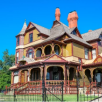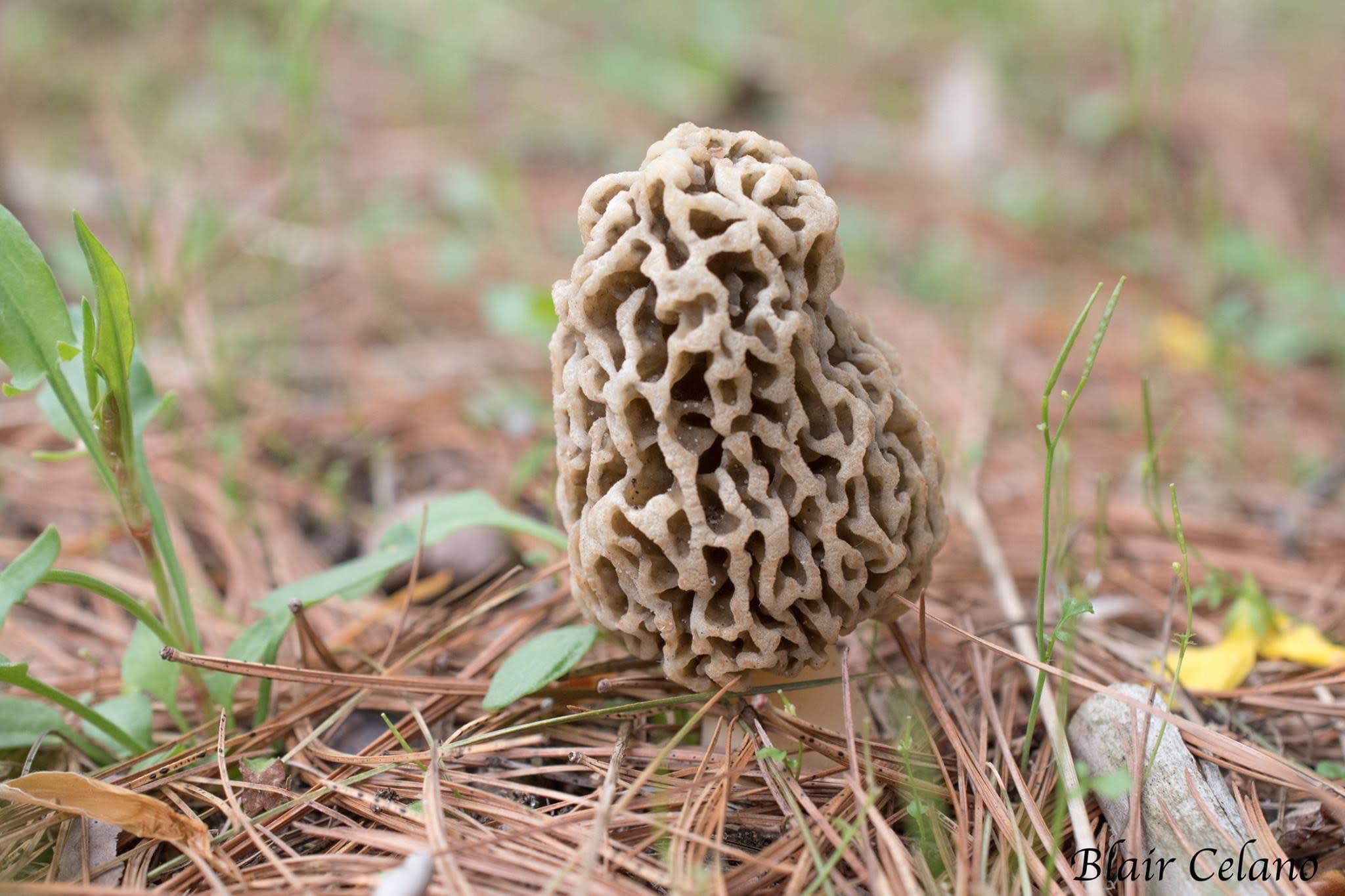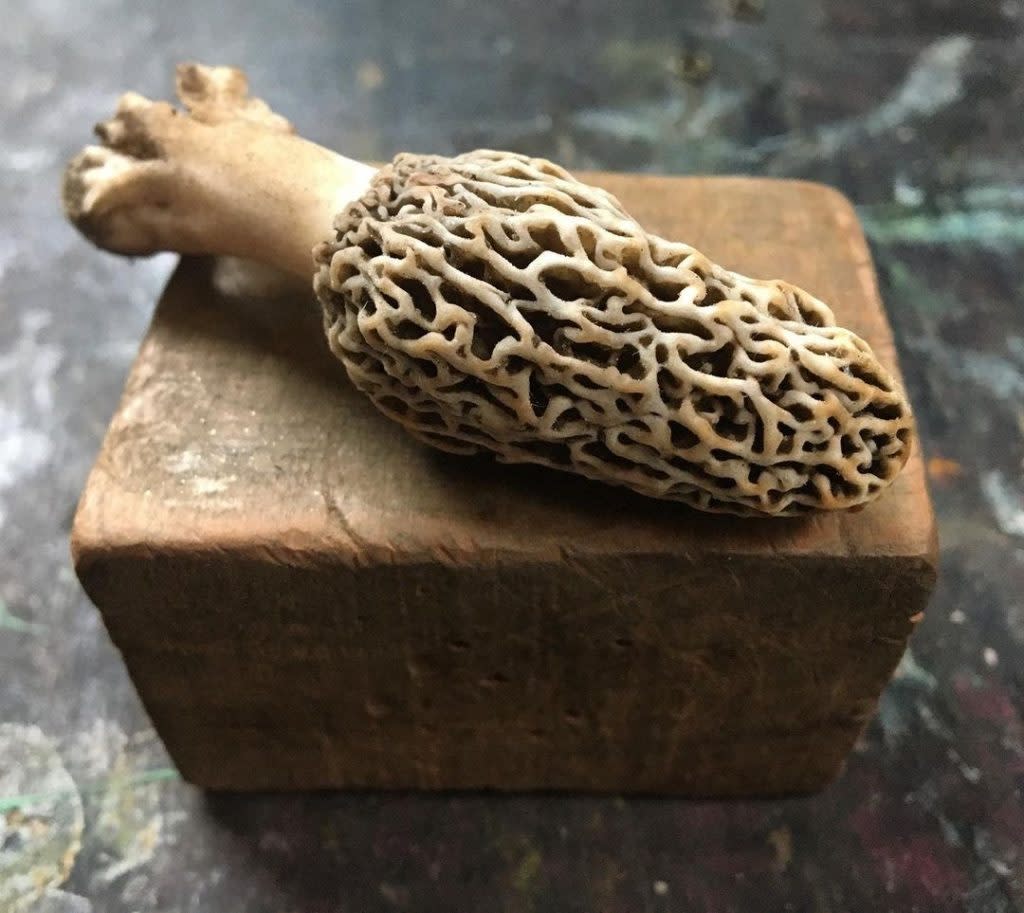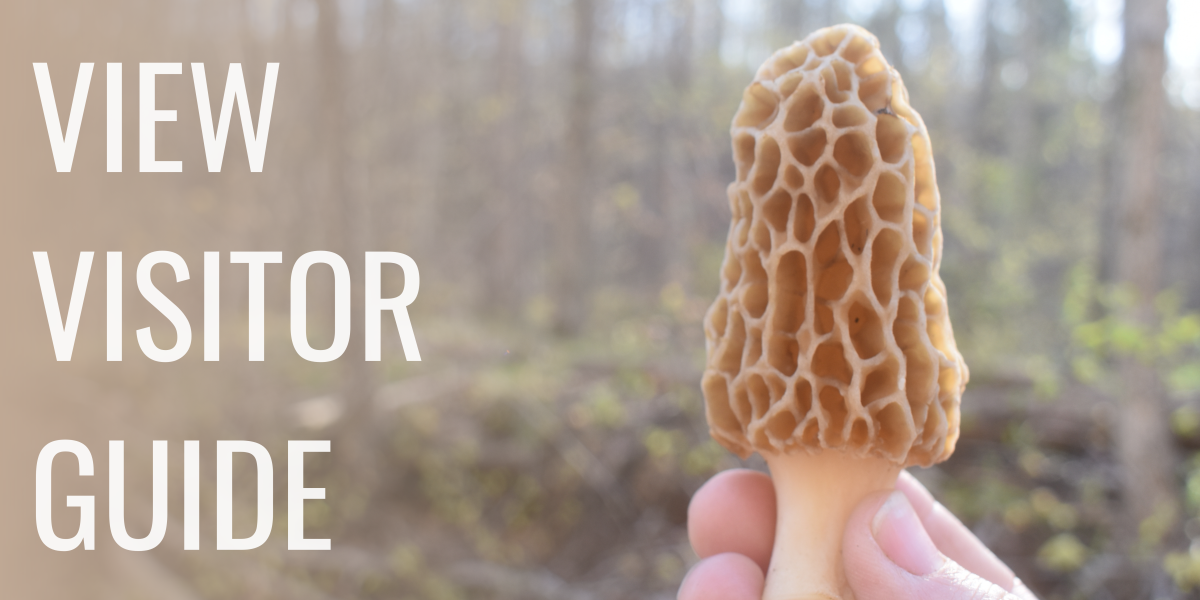Recently I found myself catching “Morel Season Fever”. I have never been Mushroom Hunting and did not know where to begin. I had so many questions!
- Where to look?
- What is safe?
- Who do I ask?
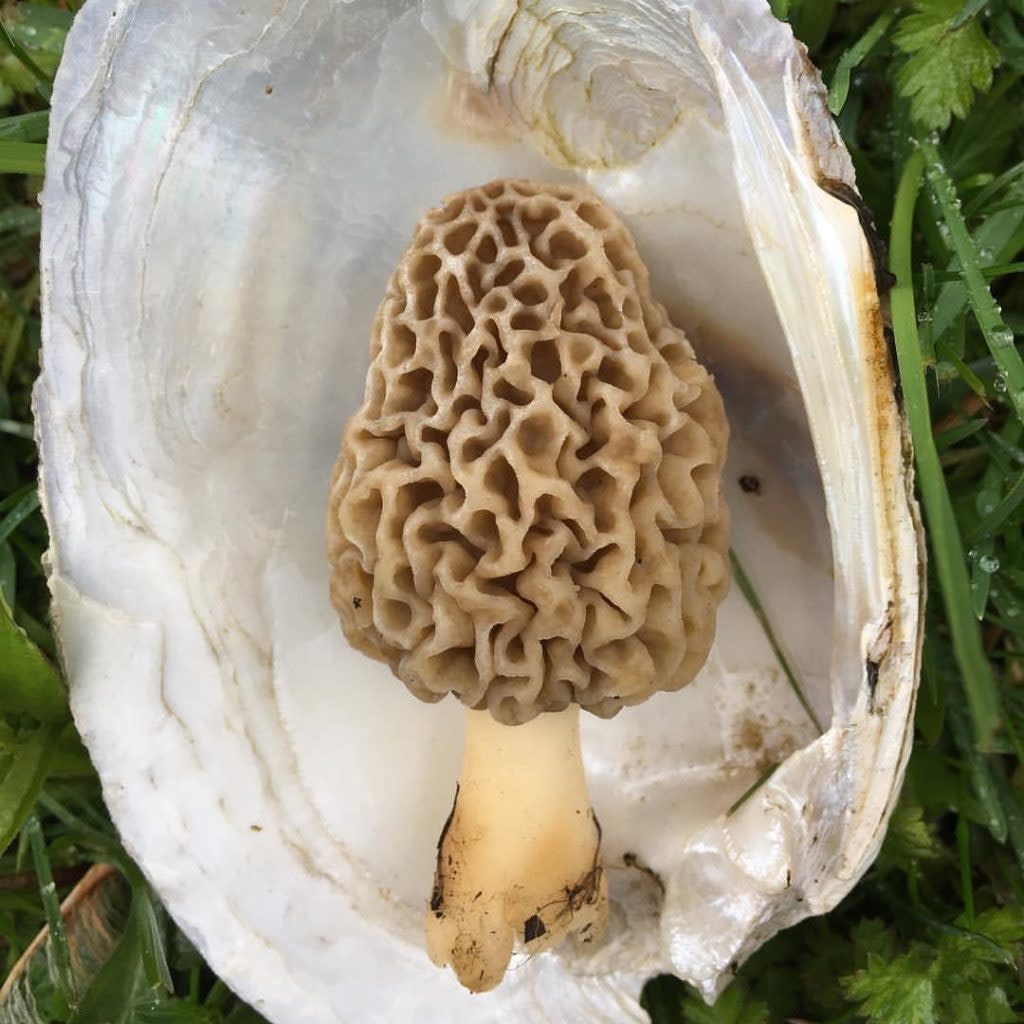 Photo Courtesy of Cindy Beth Davis-Dykema
Photo Courtesy of Cindy Beth Davis-Dykema
By joining a Michigan Mushroom Facebook group, I was able to connect with Tim Coddington. Tim is a mushroom expert…and certified at that! Tim had recently passed Michigan State University's "Michigan Mushroom Identification Expert" exam. What could be better than having my questions answered by an authorized expert?
Here is the knowledge that Tim kindly imparted:
Q. What time of year should I start looking?
A. Spring is the time when morels fruit. When soil temperatures are consistently in the 50's and there is available moisture in the soil, conditions are ripe for morel collecting. In the Muskegon area, the season generally starts two weeks before or after the first day of May. Depending on weather conditions, the season can last 4-5 weeks.
Photo Courtesy of Blair CelanoQ. What kind of area should I look in (wet, dry, under pines, deciduous, sandy or dark soil, under leaves or logs?
A. Morels are a mycorrhizal fungus. This means their "root" system (called mycelium) works under the surface of the soil to locate and attach to the root system of certain trees. The mycelium are actually the mushroom. The part that is above the soil surface is the fruiting body of that mushroom (what we call a morel). The mushroom creates a symbiotic relationship with trees, where the mushroom provides the trees with water and nutrients from the soil and the tree provides sugars to the mushroom to promote growth.
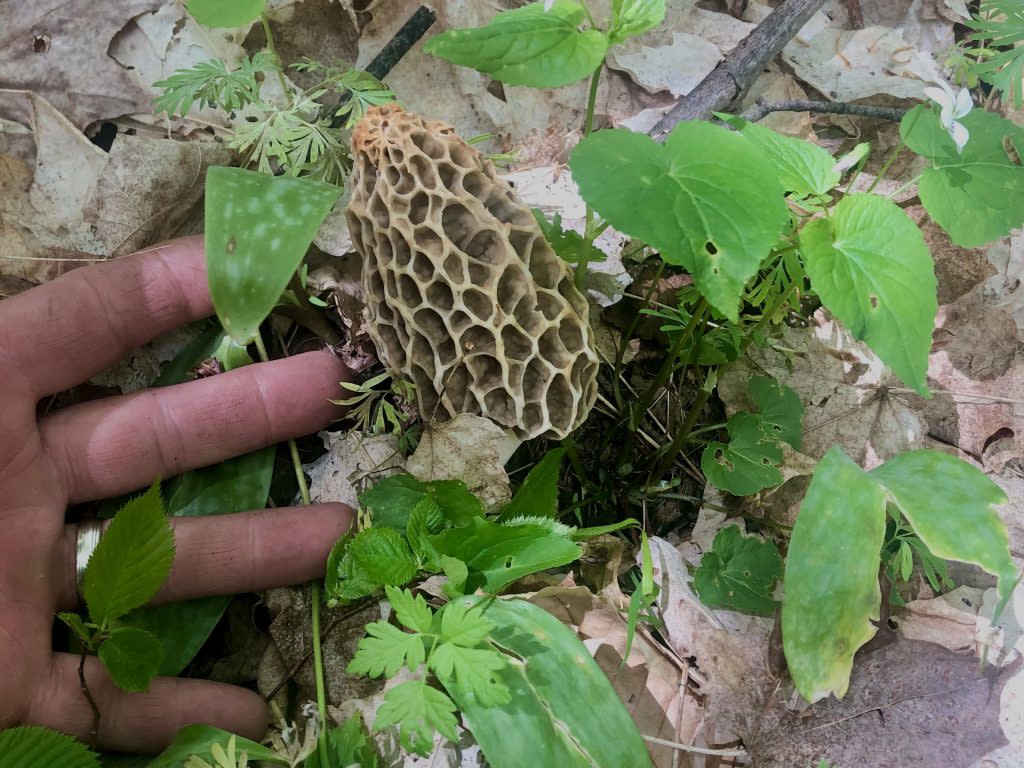 Photo Courtesy of Mark Grant
Photo Courtesy of Mark Grant
Morels create relationships with specific types of trees – aspen, balsam poplars, elm, ash, sycamore, and apple trees. Occasionally, they associate with conifers, such as white pine. The best place to look is under these types of trees, in soil that is well drained and not compacted.
Mushrooms breathe oxygen (like us) and require oxygen in the soil to proliferate. I have my best luck under large trees with minimal undergrowth and a thin layer of decomposing leaves.
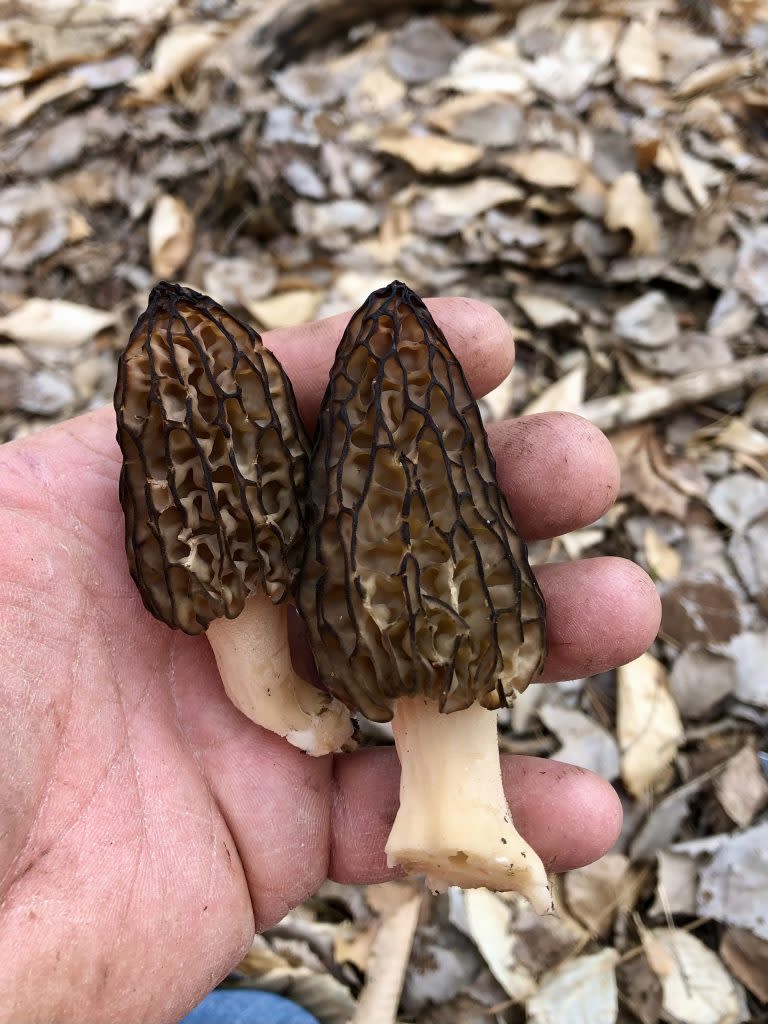
Q. How do I know it’s a morel, and SAFE to eat?
A. Morels have a couple toxic lookalikes, so attention to detail is key. If you cut a morel in half, from top to bottom, the stem and cap should be totally hollow. The cap (or stem) should contain no internal chambers or white cotton-like material. As well, the stem should attach to the bottom of the cap, not up inside the cap. There is one species of morel which the stem connects half way up inside the cap (half-free morel) but, beginners should stick to the basics.

On the subject of safe to eat, they are safe for most people when they are cooked (they actually contain a poison until they are cooked). As with any food, certain people may have an allergic reaction. It's recommended (for any mushroom) that you only eat a small portion the first time, to check for any adverse allergic reaction.
Photo Courtesy of Mary SundstromQ. How quickly should they be eaten after harvesting?
A. When picking morels, never place them in a plastic bag or sealed container. The morels must have ventilation or they will start to decompose. If not eaten right away, fresh morels can be refrigerated for a week or two.
Photo Courtesy of Patrick Chadd / eclecticookQ. How do you clean them?
A. When harvesting, I use a small brush to remove any debris, or other matter, before they go into my basket or mesh bag. When I get home, I cut each one lengthwise and check for anything that may be on the inside. This way I can also verify they are actual morels (no cotton-like material or chambers).
 Photo Courtesy of Tim Coddington
Photo Courtesy of Tim Coddington
Q. Can they be frozen, or dehydrated?
A. Yes. They can be frozen. I lay them out on a cutting board (cut side up), individually, and placed them in the freezer. After they are frozen, I put them in a plastic bag. The pre-freezing prevents them from freezing to one another. This allows me to take only a few from the bag, as needed. And, morels can also be dehydrated or dried.

Q. What are some ideas for preparing them?
Sautéing with butter and garlic is the old standby (great on steaks). My favorite, however, is creamy morel and wild ramp (wild leeks) soup. It stores well and if made thick enough it can also be used over pasta. (Click the image below for a delicious Pasta with Morel Cream Sauce recipe!)
Pasta with Morel Cream Sauce from eclecticookQ. Where can I learn more about mushrooms?
The Michigan Mushroom Hunting Club (MMHC) is one of the best resources for learning about mushrooms in our area. The club was established on the East side of the state in 1981. It has now grown to include a Central Region and a West Michigan Region. The club has over 27 public hunts (open to the public) and many private hunts (members only). There are often public hunts scheduled in Muskegon during the year. While the morel season lasts a short time in spring, there are edible mushrooms that fruit throughout the warmer months. Some of these (in my opinion) are better than morels.
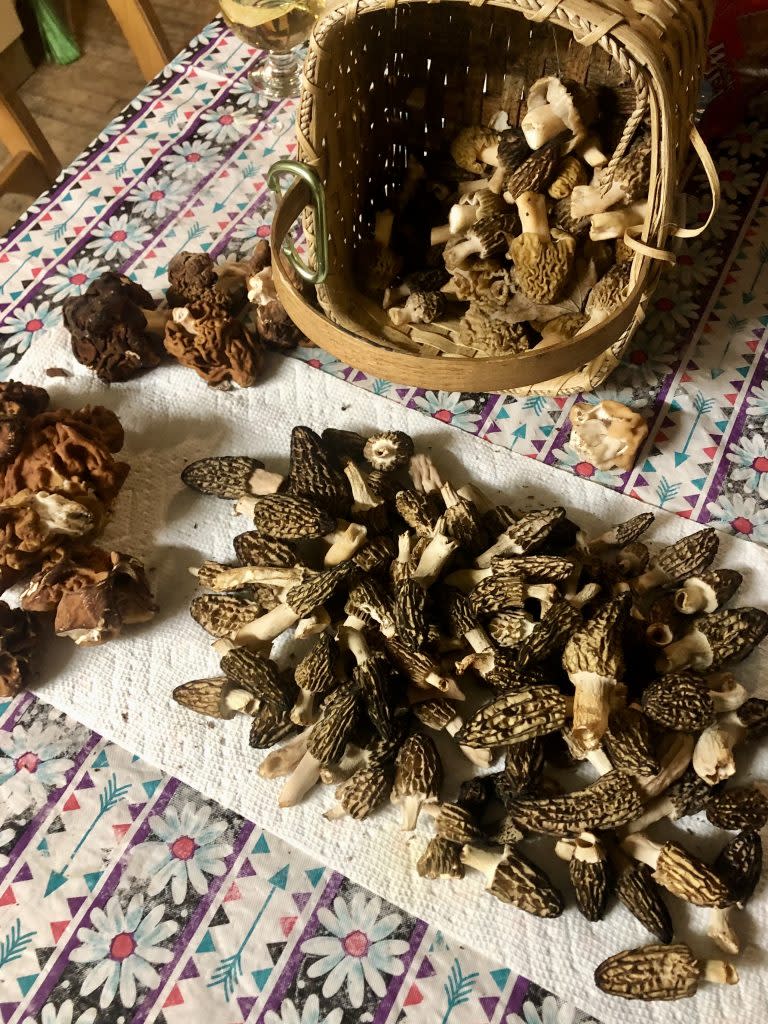
Click HERE for more information regarding the Michigan Mushroom Hunters Club and their club membership form: Follow the club on Facebook HERE. Many thanks to Tim Coddington, West Region Coordinator State of Michigan Certified Wild Mushroom Expert
Happy hunting!
